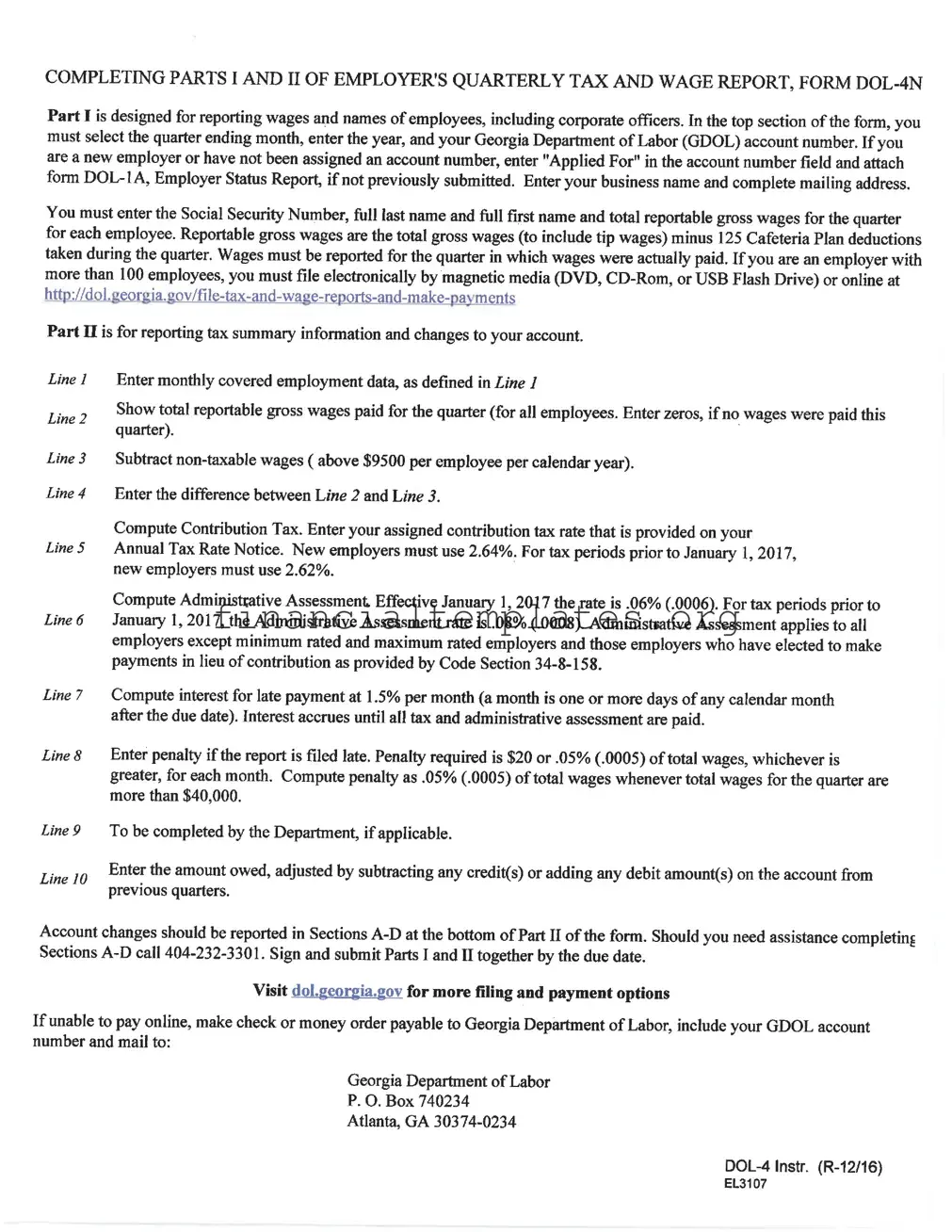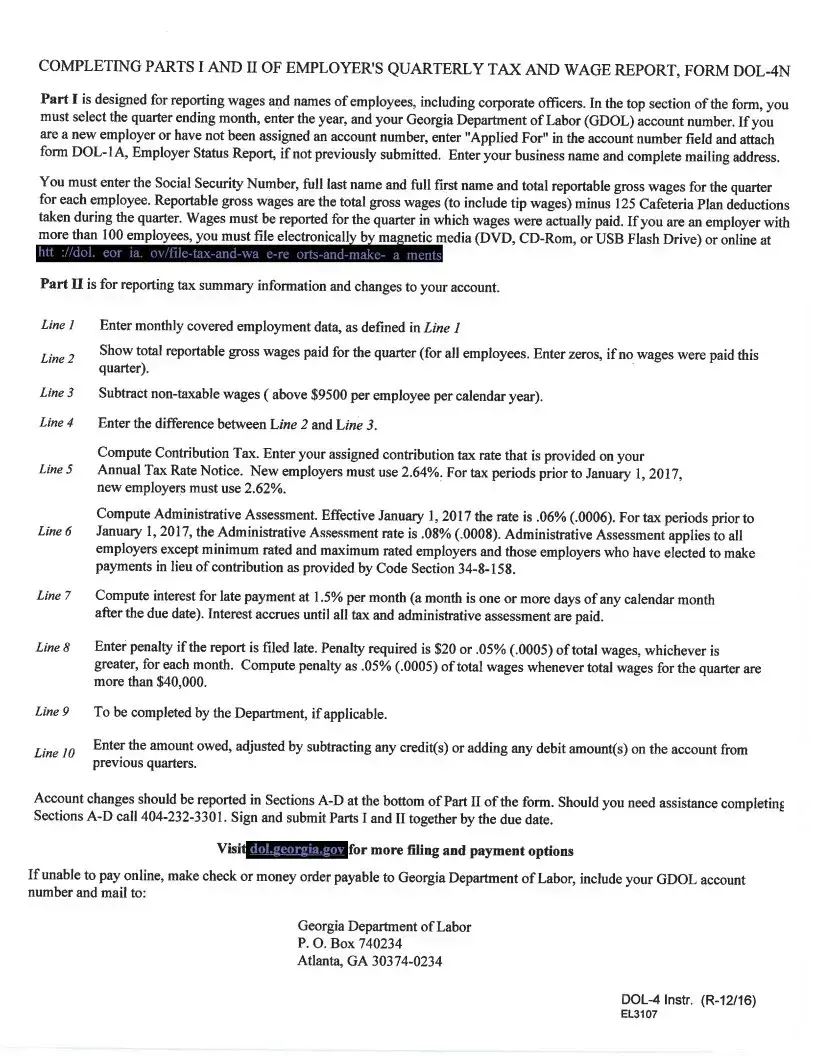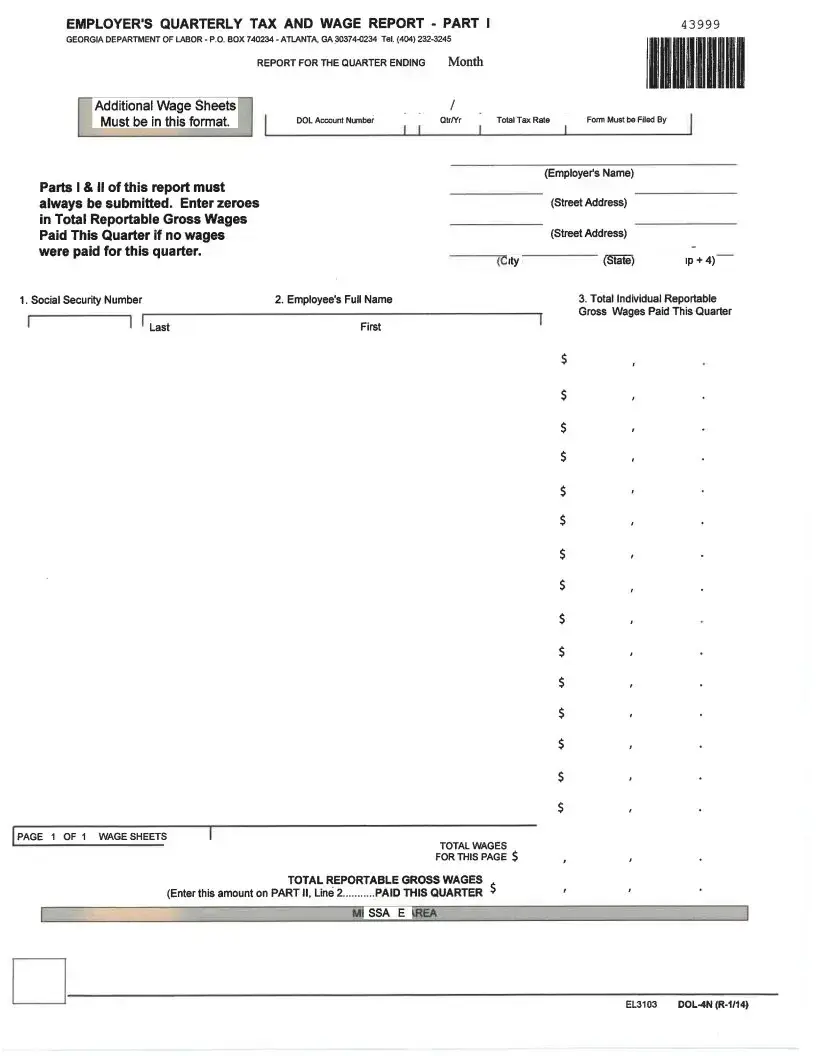The Georgia Tax Wage Report form, officially known as Form DOL-4N, plays a critical role in how employers communicate employee wage and tax information to the Georgia Department of Labor (GDOL) on a quarterly basis. For effective reporting, the form is divided into two main parts: Part I focuses on the wages paid and the names of the employees, including any corporate officers, requiring detailed information such as social security numbers, full names, and total gross wages for each employee. On the other hand, Part II demands tax summary information, reporting total reportable gross wages, subtracting non-taxable wages, and calculating the contribution tax and administrative assessment based on the rates provided by the GDOL. Furthermore, this part of the report also covers penalties for late filing, interest calculations for overdue payments, and necessary adjustments to the account for any credits or debits from previous quarters. The form is designed to accommodate the needs of all kinds of employers, mandating electronic filing for those with over 100 employees. Additionally, it provides a section for reporting any changes to the employer's account, such as a change in business name, principal location, or ownership status. Notably, the careful completion and submission of this form are essential to compliance with Georgian labor laws and regulations, serving as a vital tool for maintaining accurate employment records and ensuring the proper calculation and payment of taxes and contributions.




